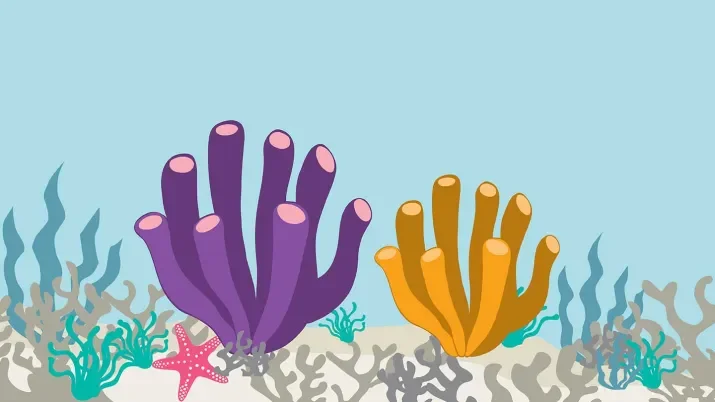How to get started in impact investing: your questions answered
Conviction Equities Boutique
Do you know what “enablers” are when it comes to impact investing? And how impact differentiates from ESG? Vontobel’s Pascal Dudle and Marco Lenfers regularly meet with seasoned investors looking to shift or expand into impact investing. Here they respond to the questions professional and institutional investors most commonly ask about building better futures through impact investing.
How did the whole impact investing philosophy begin?
Pascal: It was getting increasingly obvious that the world was just not functioning sustainably. Climate change, loss of biodiversity, depletion of natural resources but also lack of equality and inclusiveness in society were problems that humanity couldn’t ignore any longer. Impact investing emerged out of a growing determination to change things. Our firm got in on the ground floor primarily because the Vontobel family itself was so decisively committed to positive change. And they realized that where there’s risk, there are also opportunities. We launched our first impact strategy in 2008, and already from the following year Vontobel has been purchasing CO2-certificates to offset all operational emissions. We wanted to lead by example.
What’s Vontobel’s main goal? Impact or performance?
Pascal: For us, impact and financial returns are equally important. They go hand in hand, and that’s the whole basis of our “double dividend” approach. We believe only if a company's products and services are financially successful can it have impact in the real world. That’s also why we track a company’s performance and impact in depth and over time. A “snapshot” of where it stands today doesn’t necessarily help us judge whether it has the potential to achieve impact and be financially successful long-term.
Marco: To be clear: we would never buy a company purely because of its impact if we weren’t convinced from a financial perspective. And the same applies the other way around. We always try to take a holistic view, to look at both sides of the coin, reflecting our aim to deliver on our double dividend concept.”
Do you set specific impact targets for each individual company, or are they defined at portfolio level?
Marco: We do have targets at company level. Each holding has to contribute to our impact pillars, which all overlap with at least one Sustainable Development Goal. We then report the overall impact on an aggregated portfolio level. What we don't do is set a specific impact target for an individual portfolio, let's say for potential avoided emissions. That could end up with us investing in a company purely because it's potentially impactful, even though we're not convinced on the financial side. We always take the holistic view.
Pascal: Of course, we continually monitor holdings, and if we see something moving in the wrong direction, we start engaging with management on the particular issues we flagged. That can happen at any time during the investment lifecycle, and it gives us a lever to influence the company’s behavior before serious problems develop.
Most people can easily grasp the benefits that would come from supporting a wind turbine producer. Understanding how something like a semiconductor company could create positive impact is a different story. How do companies like that make a contribution?
Pascal: The turbine is obviously easy to understand; it’s a case of green energy replacing carbon-intensive technologies typically based on gas or coal. And it’s relatively easy to calculate the impact in terms of avoided CO2 emissions and so on. When it comes to other industries such as microchips, which can be equally impactful, we often talk about “enablers”. These are technologies that help for example, to increase the energy efficiency or smartness of various devices. One example I often use with clients is office ventilation. In the old days, you had the ventilation running at full speed all day. In the meantime, smart sensors have been developed that vary the ventilation strength according to how many people are in the room, saving a lot of energy over time. The smart sensors obviously contain the newest semiconductors.
Marco: Another good example is cars, which over the years have been equipped with more and more semiconductors to optimize fuel efficiency, reduce emissions etc. Today’s electric vehicles (EV) couldn’t move an inch without smart semiconductors. They therefore “enable” an efficient use of the battery power and extend the range of an EV. In the case of semiconductors, the whole industry is also making a huge effort to significantly cut material and energy consumption involved in the manufacture and running of its products.
What do I do as an investor when I come across a company that provides a great solution to an environmental or social problem but has serious ESG issues in other areas?
Pascal: Evaluating a company from an ESG perspective means looking at it primarily in terms of risk. The impact perspective, on the other hand, is more about the company’s contribution to change in the real world. If a company is in negative territory with both, it’s not investable for us unless we have clear evidence that all its investments are being channeled into new, better sustainable solutions. But we will consider investing in a company with current ESG issues providing it is undertaking a clear strategic move away from its old practices and investing in new ways of doing business.
Marco: One iron rule we stick to is that whatever its status, we will not invest unless a company is doing no significant harm with its activities. You mustn’t forget that companies we invest in have to adhere to international norms and regulations, which encourages them to toe the line. In addition, we have our own definite thresholds for activities related to things like coal, oil and other critical activities to ensure that we don’t get involved in anything that will harm the planet or society.
You favour companies with a “high conviction” approach. Doesn’t that tend to reduce the level of diversification within such portfolios?
Marco: The opportunities within various topics are generally big. From our own experience, since we apply our investment strategy, I would say on the environmental side we’re talking about 600 stocks, and that figure doubles if you also bring in social aspects. For an investor looking to have 50 to 70 stocks in the portfolio, that represents quite a selection. When it comes to volatility, renewable energy and transportation can for instance be quite volatile. But not all topics follow the same pattern. That means if you build a portfolio of different challenges and opportunities, you have the chance to diversify over the cycle. The important thing is to consider everything holistically rather than focusing on just one area. Our global environmental change strategy is one example of a way to do this effectively. We believe it is possible to get diversification and thus reduce volatility in the global equity market.
How can I, as an impact investment newcomer, judge a provider’s credentials and how competent they are in the field? Where do I get reliable information on the sector?
Marco: The good news is that industry regulation has forced companies to provide quite detailed public information about sustainability of operations, a lot of which is available via the web. The Sustainable Finance Disclosure Regulation (SFDR) of the European Union, for instance, is all about disclosure. The bad news is that everyone does things differently, forcing you to draw comparisons and make up your own mind. If I were new to the space, I’d be on the lookout for a provider who’s not a new kid on the block, jumping on a marketing bandwagon. Experience and dedication are absolutely key. You want to deal with people who’ve been around for a long time and have the experience to know what they’re doing.
Pascal: The other vital aspect is transparency. Do the managers only provide the information demanded by the regulator, or do they go beyond it? Do they have an impact report, do they have an independent body verifying their data?
Are impact pillars set in stone, or do they evolve over time?
Pascal: Tackling environmental and social challenges is not something for the short term. It’s structural. For example, net zero targets will only be achieved over many decades. So, our impact pillars have always been fundamentally as they are today. What is evolving are the technologies and investment opportunities that we find within the impact pillars. We adapt to those so our clients can thrive in changing circumstances. You could say it’s a process of optimization. To give you an example, LED lighting was a new technology several years ago. But now it’s become very much the standard in lighting, so it’s no longer a big focus of ours as it’s established and offers less prospect of impact and investment upside. Looking to the future, green hydrogen is an example of a technology that can have impact and is just on the verge of becoming competitive in various applications. So, we’ve shifted our focus and started investing there.
If you have additional questions not answered here, please contact one of our local representatives.
This document is for information purposes only and nothing contained in this document should constitute a solicitation, or offer, or recommendation, to buy or sell any investment instruments, to effect any transactions, or to conclude any legal act of any kind whatsoever. Decisions based on information contained in this document are the sole responsibility of the reader. You must not rely on any information contained in this document in making an investment or other decision. This document has not been based on a consideration of any individual investor circumstances. Any projections, forward-looking statements or estimates contained in this document are speculative and due to various risks and uncertainties, there can be no assurance that the estimates or assumptions made will prove accurate, and actual events or results may differ materially from those reflected or contemplated in this document. Opinions expressed in this document are subject to change based on market, economic and other conditions. Information in this document should not be construed as recommendations, but as an illustration of broader economic themes. Past performance is not a reliable indicator of current or future performance. The return of an investment may go down as well as up, e.g. due to changes in rates of exchange between currencies. The value of the money invested in a fund can increase or decrease and there is no guarantee that all or part of your invested capital can be redeemed.






